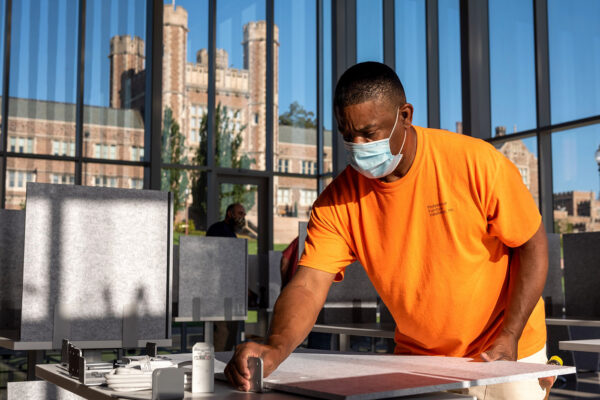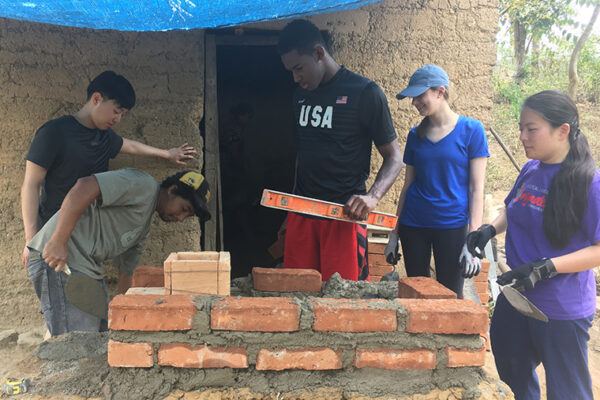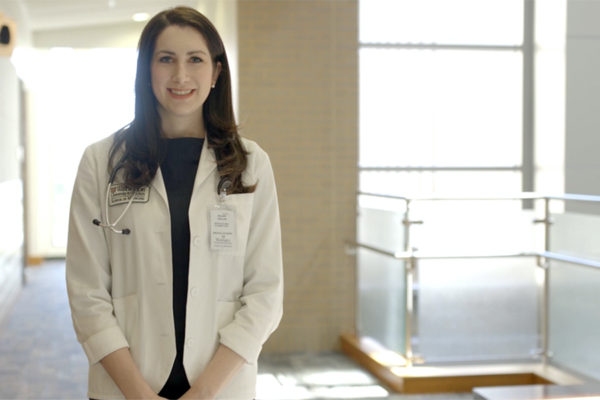Eleven-year-old Emma loves Mondays. That’s when she gets to dance, box and play games with other children who have cerebral palsy at Music & Movement, a weekly class offered by St. Louis Children’s Hospital. This Monday, Emma eagerly awaits the arrival of her favorite volunteer, Washington University in St. Louis senior Addie Avery.
“Miss Addie, will you be my partner, please?” Emma asks as Avery arrives at Brentwood Community Center. “Miss Addie, have I grown since last week?”
Avery has been looking forward to the class, too. She is director of the Cerebral Palsy Sports and Rehabilitation (CPSR) program for Synapse, Washington University’s student neuroscience club. For four years, she has volunteered at adaptive dance classes, helping children build strength and flexibility.
“CPSR has been a huge part of my WashU experience,” said Avery, who is studying philosophy-neuroscience-psychology in Arts & Sciences. “Dancing with these kids is super fun and reminds me why I do what I do.”
Avery’s little sister, Kate, also has cerebral palsy. In high school, Avery and her mother helped launch a camp where Kate and other children could play adaptive sports. When Avery arrived at Washington University, she was excited to discover that Synapse supported similar sports rehabilitation programs. Today, she recruits and dispatches volunteers to Children Hospital’s dance and martial arts programs and KEEN’s basketball program, which serves children with autism, cerebral palsy, Down syndrome and various developmental disabilities.
Synapse volunteers also visit dementia care patients at the Mary Ryder Home, a care facility for low-income senior women. In addition, Synapse’s education team has developed and teaches neuroscience lessons in local schools and helps high school students prepare for the St. Louis Area Brain Bee, a neuroscience competition the group co-hosts at Washington University. In total, some 100 students participate in Synapse, making it one of the university’s largest and most engaged student organizations.
“Being in the community has always been a core part of what we do,” said senior William Carter, Synapse co-president. “A lot of us joined Synapse because we want to be out helping people, not just listening to lectures in a classroom.”
That certainly is the case for Avery, who next plans to attend graduate school in preparation for a career in genetic counseling.
Back in class, she and Emma are dancing to “Head, Shoulders, Knees and Toes.” Because cerebral palsy disrupts the brain’s ability to control the body’s muscles, Emma can’t quite touch her toes and has trouble clapping. Other students are unable to walk and work with physical therapists to bend their elbows and raise their arms. The class ends, and Avery gives Emma a high five. If either are tired after an hour of dancing to Taylor Swift and Disney classics, they don’t show it.
“Thank you for being my partner, Miss Addie,” says Emma, her smile wide. “See you next week.”


